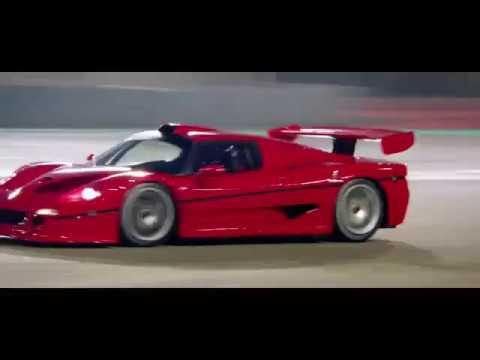
In the mid-1990s, the newly established BPR Global GT Series became increasingly popular and many major automobile manufacturers participated. Ferrari entered the competition with the F40 GTE, but the aging racer was no match for the BMW-powered McLaren F1 GTR, which dominated the GT1 premier class in both the 1994 and 1995 seasons.
At this point, everyone was talking about the British sports car, hailing it as the best ever built. This was unacceptable to Ferrari, which decided to build a completely new racing car based on the F50, the company’s newest flagship.
Dallara and Michelotto were hired to turn the road supercar into a full-blown GT1 contender, and the joint team worked feverishly on the first prototype.
The 4.7-liter V12 naturally aspirated Tipo F130B, which was derived from the Tipo 036 of the 1990 Ferrari 641 Formula 1 racing car, already spewed out 512 hp in series production. The engineers tuned it extensively, however, and when they were finished, it made a monstrous 739 hp and turned up to 11,000 rpm. It was paired with a heavily modified version of the factory six-speed manual transmission that was spiced up for increased performance and based on sequential shifting was changed.
Next up was the chassis, which received several chassis modifications and larger, racing-oriented brakes. The rear of the monocoque was completely redesigned and now contained two carbon fiber columns that supported the massive rear wing.
The body has also been extensively upgraded. A light, fixed roof with an integrated air scoop that conducted fresh air to the engine replaced the standard removable hardtop. In addition, the front apron received a modified bumper and a bonnet with enlarged intakes, while a new diffuser was attached to the rear.
Inside, the already spartan cockpit of the F50 series has been freed of everything that was considered unnecessary, such as air conditioning, door handles, carpeting or any form of insulation. The driver’s seat was now an FIA homologated Momo version while the other was removed. Other modifications included a fully digital screen that was mounted behind the steering wheel in place of the analog instrument cluster.

Once completed, the first F50 GT was driven by factory driver Nicola Larini on the Fiorano circuit, which reportedly achieved faster lap times than those with the lighter and more aggressive prototype 333SP.
According to Ferrari, the plan was to deliver the first six cars to Scandia Racing and Ferrari Club Italia, as well as racing teams supported by Momo Corsa. Everyone was eager to get their hands on the brilliant car, but unfortunately they didn’t.
In the 1996 offseason, when the F50 GT was still in the final stages of development, the FIA announced that it would take over the BPR Global GT Series. They believed that in order to make the competition more exciting and attract new manufacturers, it would have to be revised. The governing body began with a name change that renamed the series the FIA GT Championship, but more importantly, they also changed the rules so that automakers competing in the GT1 class could build quasi-prototypes based on 25-unit homologation models.

These steps led to the birth of the Porsche 911 GT1 and Mercedes-Benz CLK GTR, but also suddenly made the new jumping horse car obsolete. Angry about the changes and unwilling to spend more money on further development, Ferrari eventually left the competition and pulled the plug on the F50 GT program.
Of the six units, only three were completed and then sold to carefully selected customers. Ferrari also had three unfinished chassis left, but little is known about their fate. Some speculate that they were destroyed, while others state that they were disassembled and the components sold or reused.
Although it has never competed in an official race, the F50 GT remains one of the craziest racing cars ever built in Maranello. It’s also one of the rarest Ferraris out there and on the rare occasions when it shows up in public it leaves the enthusiast with their mouths lowered. You can get a glimpse of this epic machine in the video below courtesy of Fastest Cars, where it’s really driven at the Yas Marina circuit in Abu Dhabi.







